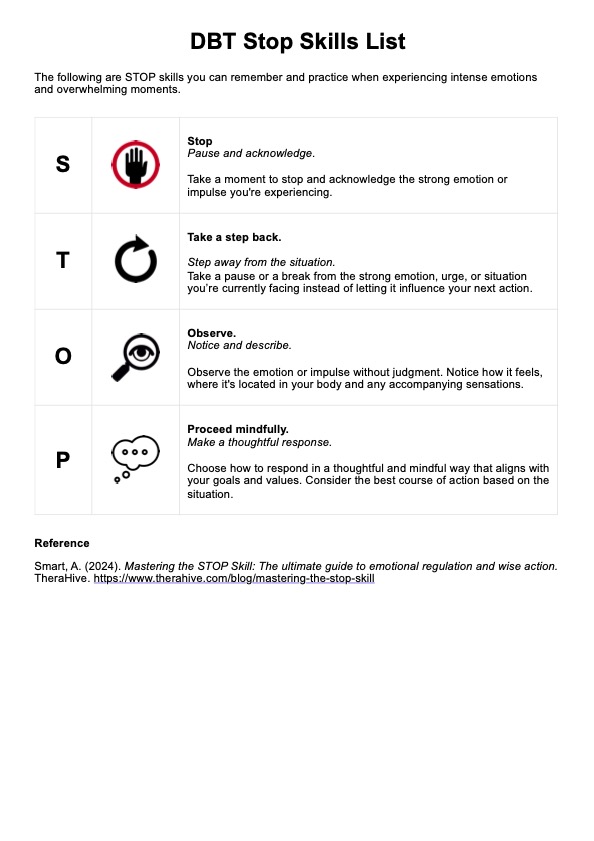These lists are particularly helpful for people seeking to manage intense emotions, reduce impulsive behaviors, and develop healthier responses to challenging situations.

DBT Stop Skills Lists
Download a reference tool to teach clients the DBT STOP skills to help them better regulate their emotions.
DBT Stop Skills Lists Template
Commonly asked questions
DBT STOP Skills Lists are used whenever individuals face overwhelming emotions, impulsive reactions, or distressing situations. These lists can be used in real-time, during moments of emotional intensity, and in regular practice sessions to enhance overall emotional well-being.
When facing intense emotions, individuals can follow steps such as pausing to acknowledge the emotion, taking a calming breath, observing without judgment, and mindfully choosing to respond in alignment with their goals and values.
EHR and practice management software
Get started for free
*No credit card required
Free
$0/usd
Unlimited clients
Telehealth
1GB of storage
Client portal text
Automated billing and online payments











